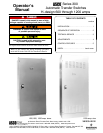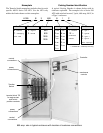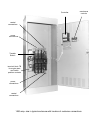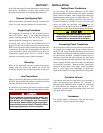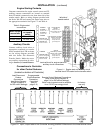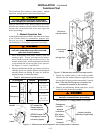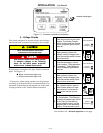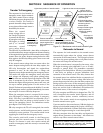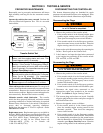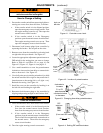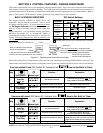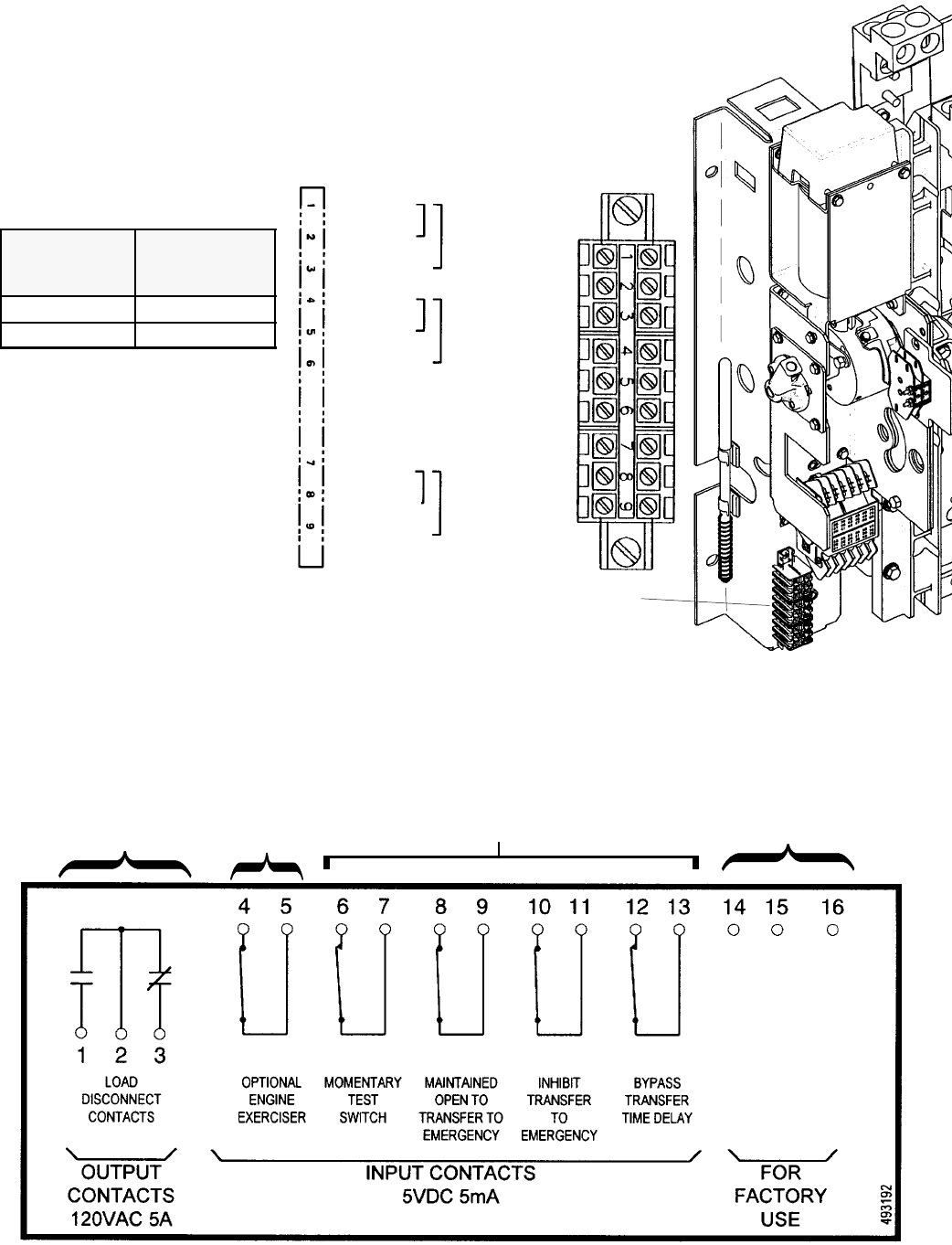
terminal block for engine start and
auxiliary circuit connections
left side of
transfer switch
COMMON
FEATURE 7
closes to start
FEATURE 8
opensto start
COMMON
FEATURE 14B
closedon emergency
FEATURE 14A
closedon normal
COMMON
FEATURE 14BA
closedon emergency
FEATURE 14AA
closedon normal
Engine Starting
Signals
5amps,32VDC
5ampsresistive28VDC
or 120V ACmax.
TS Auxiliary Contacts
Feature 14A & 14B
10 amps, 32V DC
10 amps250 V AC
general purpose
Optional
TS Auxiliary Contacts
Feature 14AA & 14BA
10 amps, 32V DC
10 amps250 V AC
general purpose
INSTALLATION (continued)
1 --- 2
Engine Starting Contacts
Customer connections for engine c ontrol contact and TS
auxiliar y contac ts c onn ec tions are loc ated on terminal
bloc k TB w hich is mounted on the front l ower left of the
transfer s witc h . Refer to wiring diagr am provided w ith
the Series 300 ATS and connect the engine start wires to
the appropriate terminal s. See Figure 1–1 and Table A.
TableA.Enginestart
connections.
When normal
source fails
Terminals
on transfer
switch
contact closes TB1 and TB2
contact opens TB1 and TB3
Auxiliary Circuits
Connect auxiliary circuit wires to
appropriate terminals on transfer
switch terminal block TB as shown
on the wiring diagram provided
with this Series 300 Automatic
Transfer Switch. Make the neces-
sary auxiliary connections by refer-
ring to Sect ion 5, Control Features.
Connections to Controller
for other Control Features
(located on bottom of Controller)
Figure 1-1. Engine start and auxiliary circuit
terminal block TB located on the transfer switch.
for factory
use only
Remote Control Features Connections
(refer to the Wiring Diagram &
page 5–4 for DIP switch settings)
Each control contact must be suitable
for a 5 V DC low energy circuit.
Programmable
Engine Exerciser
connection,
if provided
(refer to
page 5–3)
Load Disconnect
Feature
Connections
(see Wiring Diagram
& refer to page 5–4
for DIP switch settings)
Figure 1-2. Input / output label on the Controller showing possible connections to the lower terminal block.



